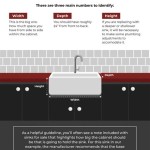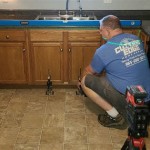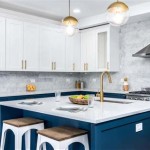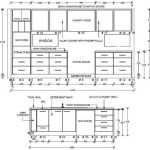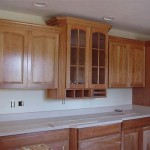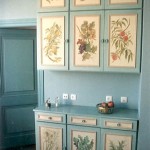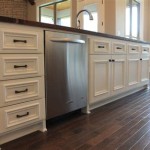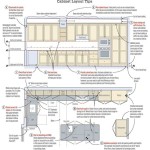```html
Kitchen Cabinet TV Guide: Entertainment at the Heart of the Home
The integration of television into the kitchen has evolved significantly, transforming it from a purely functional space to a central hub for family interaction and entertainment. Kitchen cabinets, once solely dedicated to storage, now frequently house integrated televisions, creating a seamless and aesthetically pleasing viewing experience. The "Kitchen Cabinet TV Guide" encompasses the selection, installation, and practical use of televisions specifically designed or adapted for installation within kitchen cabinetry. This article provides a comprehensive overview of key considerations when incorporating a television into the kitchen cabinet design, covering aspects of technology, design, installation, and usage.
Technical Considerations for Kitchen Cabinet Televisions
Selecting the right television for kitchen cabinet integration necessitates careful consideration of technical specifications. Screen size is a primary factor, dictated by viewing distance and the available space within the cabinet. Smaller kitchens typically benefit from screen sizes ranging from 19 to 32 inches, while larger kitchens may accommodate larger displays. Resolution is another crucial element; High Definition (HD) or Ultra High Definition (UHD) displays provide sharper, clearer images, particularly desirable when viewing content from closer distances. Viewing angles are also important, as the television may need to be viewable from various points within the kitchen. In-Plane Switching (IPS) panels generally offer wider viewing angles compared to other panel types, minimizing color distortion when viewed from off-center positions.
Connectivity options are also critical. Modern kitchen cabinet televisions should ideally feature multiple HDMI ports for connecting external devices such as cable boxes, streaming devices, and gaming consoles. Wi-Fi capability is essential for accessing streaming services and online content. Bluetooth connectivity facilitates wireless connectivity to headphones or speakers. The presence of USB ports enables playback of media files directly from USB drives.
Durability and resistance to environmental factors are also key. Kitchens are prone to higher levels of humidity and temperature fluctuations compared to other areas of the home. The television should be designed to withstand these conditions, with appropriate sealing and ventilation to prevent damage from moisture or excessive heat. Consider models with protective coatings or screens that are resistant to splashes and spills. Furthermore, it is essential to address power supply and wiring considerations, ensuring compliance with local electrical codes and safety standards.
Design Integration and Installation Best Practices
Integrating a television into kitchen cabinets requires careful planning to maintain both functionality and aesthetics. The placement of the television is paramount, considering viewing angles, proximity to cooking areas, and overall kitchen layout. Popular options include mounting the television under a cabinet, within a cabinet door, or recessed into a custom-built cabinet enclosure. Under-cabinet televisions are typically smaller and designed to be easily tilted or swiveled for optimal viewing. Cabinet door televisions can be hidden when not in use, preserving the clean lines of the cabinetry. Recessed enclosures provide a more integrated look, concealing the television when it is turned off.
Ventilation is a critical factor during installation. Enclosed spaces can trap heat generated by the television, potentially leading to overheating and premature failure. Adequate ventilation is crucial to dissipate heat and maintain optimal operating temperatures. This can be achieved through strategically placed vents or the incorporation of cooling fans. The choice of mounting hardware is also essential. Sturdy, adjustable mounts ensure secure attachment and allow for fine-tuning of the viewing angle. Concealing wiring is another crucial aspect of the installation process. Cables should be neatly routed and concealed behind the cabinets or within cable management channels to prevent unsightly clutter.
Professional installation is often recommended, particularly for complex installations involving electrical wiring or custom cabinet modifications. A qualified installer can ensure that the television is properly mounted, wired, and ventilated, adhering to all safety regulations and preventing potential damage to the cabinetry or the television itself. Furthermore, installers can provide guidance on optimal placement and cabling solutions to minimize visual impact and maximize functionality.
Practical Usage Scenarios and Entertainment Options
The integration of a television into the kitchen expands entertainment options and enhances the overall kitchen experience. During meal preparation, the television can provide entertainment through streaming services, news channels, or cooking shows. This can make the task of cooking more enjoyable and less tedious. During family meals, the television can serve as a focal point for shared viewing experiences, fostering conversation and creating a more engaging dining environment. Streaming services such as Netflix, Hulu, and Amazon Prime Video offer a vast library of movies, television shows, and documentaries, providing diverse entertainment options for all ages.
The kitchen television can also be utilized for educational purposes. Online cooking tutorials, recipe demonstrations, and educational programming can be easily accessed, enhancing culinary skills and providing new learning opportunities. Furthermore, the television can be connected to a smart home ecosystem, allowing for voice control of various kitchen appliances, lighting, and temperature. This integration streamlines kitchen operations and enhances convenience.
Consideration should be given to sound systems. Built-in television speakers may not provide adequate audio quality in a noisy kitchen environment. External speakers, either wired or wireless, can significantly enhance the audio experience. Bluetooth speakers offer flexibility and portability, while wired speakers can be integrated into the cabinet design for a more seamless look. Noise-canceling headphones can provide a more immersive listening experience, particularly when the television is used while others are engaged in different activities within the kitchen. Regular maintenance and cleaning are crucial to ensure the longevity and optimal performance of the kitchen cabinet television. Dust and grease can accumulate on the screen and vents, potentially affecting performance and image quality. Regular cleaning with a soft, damp cloth is recommended to prevent buildup and maintain a clear, crisp image.
```
Under Cabinet Kitchen Tv Buyers Guide Quality Mobile Blog

Under Cabinet Kitchen Tv Buyers Guide Quality Mobile Blog

Kitchen Cabinet Tv Show N Guide 9entertainment

How To Organize Your Kitchen Cabinets One At A Time

How To Choose The Right Kitchen Cabinets

25 Ways To Hide The Tv Ultimate Guide Furniture Design Modern Home

How To Organize The Inside Of Your Kitchen Cabinets

Tv Stand Guide Size Material And Style Oppein

How To Choose The Right Kitchen Cabinets

Kitchen Cabinet Guide Lowe S
Related Posts

